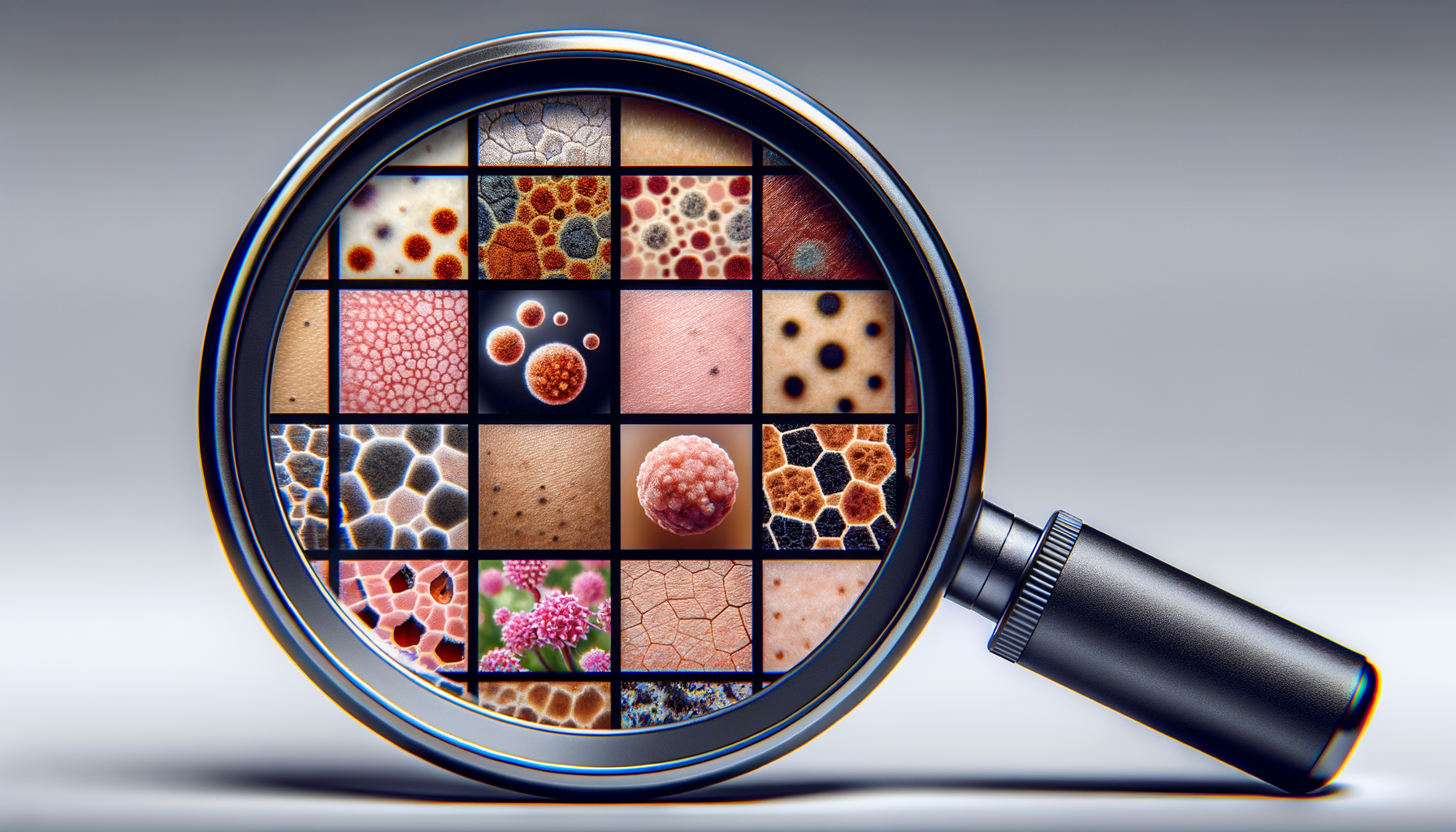
Skin Cancer Types and How to Detect Them
Introduction to Skin Cancer
Skin cancer is a significant health concern worldwide, affecting millions of people each year. It arises from the uncontrolled growth of abnormal skin cells, often due to excessive exposure to ultraviolet (UV) radiation from the sun or tanning beds. Understanding the types of skin cancer and how to detect them early can save lives. This article delves into the various types of skin cancer, their characteristics, and methods for early detection, providing valuable insights for individuals seeking to protect their skin health.
Types of Skin Cancer
Skin cancer primarily manifests in three major types: basal cell carcinoma, squamous cell carcinoma, and melanoma. Each type has distinct characteristics and levels of severity:
- Basal Cell Carcinoma (BCC): The most common type of skin cancer, BCC originates in the basal cells, which are found in the lower part of the epidermis. It typically appears as a translucent bump on sun-exposed areas like the head and neck. Although it rarely spreads, early detection is crucial to prevent extensive tissue damage.
- Squamous Cell Carcinoma (SCC): SCC arises from squamous cells, which make up the middle and outer layers of the skin. It often presents as a red, scaly patch or a sore that heals and reopens. While more aggressive than BCC, it is still highly treatable when caught early.
- Melanoma: The most dangerous form of skin cancer, melanoma develops in the melanocytes, the cells responsible for pigment production. It can quickly spread to other parts of the body, making early detection vital. Melanomas are often identified by changes in moles, such as asymmetry, irregular borders, color variations, and diameter growth.
Detection and Diagnosis
Early detection of skin cancer significantly improves treatment outcomes. Regular skin examinations, both self-conducted and by healthcare professionals, play a crucial role in identifying suspicious changes:
- Self-Examinations: Individuals should perform monthly skin checks, paying attention to any new growths, changes in existing moles, or non-healing sores. Using a mirror can help inspect hard-to-see areas.
- Professional Screenings: Dermatologists can conduct thorough skin exams, utilizing dermoscopy to evaluate suspicious lesions more closely. They may perform a biopsy on any area that appears abnormal to confirm a diagnosis.
- Advanced Imaging: In some cases, advanced imaging techniques, such as confocal microscopy or mole mapping, may be used to monitor moles over time, aiding in early detection of melanoma.
Prevention and Protection
Preventing skin cancer involves adopting sun-safe behaviors and protecting the skin from harmful UV radiation. Here are some effective strategies:
- Use Sunscreen: Apply a broad-spectrum sunscreen with an SPF of at least 30 on all exposed skin, even on cloudy days. Reapply every two hours and after swimming or sweating.
- Seek Shade: Avoid direct sun exposure during peak hours (10 a.m. to 4 p.m.) when UV rays are strongest. Seek shade or use protective clothing, hats, and sunglasses.
- Avoid Tanning Beds: Tanning beds emit UV radiation, increasing the risk of skin cancer. Embrace your natural skin tone and avoid artificial tanning methods.
Conclusion: Stay Vigilant and Informed
Skin cancer is a prevalent but preventable disease. By understanding the different types of skin cancer and practicing regular skin checks, individuals can detect potential issues early and seek timely medical intervention. Adopting sun-safe habits and protecting the skin from UV exposure are critical steps in reducing the risk of developing skin cancer. Stay informed, stay protected, and prioritize your skin health for a brighter, healthier future.